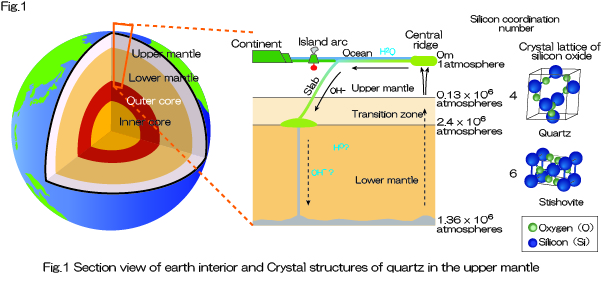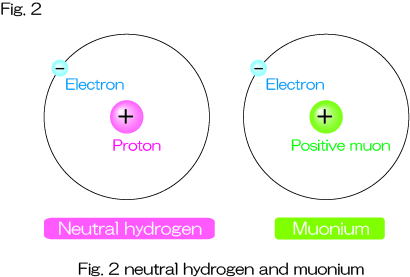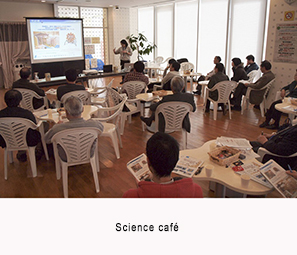| Ā° J-PARC News - March 2015 (Issue #119) |
| ĀúDr. Masatoshi Futakawa and Colleagues Receive 2014 Japan Society of Mechanical Engineers Medal for New Technology |
|---|
| The group of Masatoshi Futakawa, Deputy Head of the Materials & Life Science Division, received this award for their work "Development of Techniques Using Microbubbles to Curb Pressure Waves in Liquid Metal in order to Realize a High-Intensity Pulsed Neutron Source." This advanced technology has helped achieve the world's highest intensity pulsed neutron source at J-PARC. |
|
|
|
| ĀúDr. Hiroyuki Harada Honored with 2015 Young Scientist Award of the Physical Society of Japan (March 21) |
| Dr. Harada of Accelerator Section II received this award for his doctoral thesis (Hiroshima University) "Painting-injection study using a virtual accelerator in a high-intensity proton accelerator." This award was established to encourage research activities by outstanding young researchers who will carry beam physics into the future. |
| |
| Ā£to Page Top |
| On the 11th, the MLF switched to operation using a proton beam boosted to 400 kW. As a result, the number of neutrons produced increased by approximately 30%, and users were very happy about the immediate speed-up in their data collection times. |
| |
| Ā£to Page Top |
|
| This is a workshop on research, being carried out at facilities such as J-PARC, looking for new physical phenomena outside the "standard model" for elementary particle. It was held for the first time in Tokai Village, with the participation of about 70 researchers from inside and outside Japan. The current situation and future outlook were discussed, from the standpoint of both theory and experiment. |
| |
| Ā£to Page Top |
|
| ĀúClosing in on the Evolution of the Earth with Muons - Discovering the Possibility of the Existence of Hydrogen Atoms in New Forms Deep inside the Earth - |
| Elucidating what sort of hydrogen is present inside the earth is important for understanding the dynamics of the earth, such as its evolution and movements of its crust. The research group of Dr. Ryosuke Kadono, Dr. Kenji Kojima and their colleagues in J-PARC's Muon Science Section have used muon experiments to confirm for the first time the possibility that, contrary to the previously accepted theory, hydrogen in rocks in the deep earth exists as neutral hydrogen. Due to this discovery, there are expected to be new developments in research on the evolution and dynamics of the earth. |
| Hydrogen is the most abundant element in the universe. It is present in large amounts on the earth in the form of water (H2O), a compound of hydrogen and oxygen, and the oceans account for approximately 70% of the earth's surface. Furthermore, it is thought that a considerable amount of water exists (in the form of hydroxyl groups OH-) inside the earth in the crystal structures of hydrous minerals (Fig. 1). |
| In this research, the possibility that hydrogen exists in rocks in the deep earth, not as hydroxyl groups, but as neutral hydrogen in the atomic state (H0) was examined with the muon spin rotation method (μSR)*1, using synthetic stishovite as the material simulating the deep mantle. Stishovite is the high-pressure phase*2 of quartz (SiO2), formed under conditions of high temperature and pressure, and it is characterized by its regular arrangement of an octahedral framework comprised of silicon and oxygen (Fig. 3). It is known that quartz under regular pressure is comprised of a tetrahedral framework, and that it incorporates neutral hydrogen in the large gaps between framework units (Fig. 3). Thus the research group injected muons into stishovite, and investigated the state of existence of those muons. The results showed (Fig. 3) that many of the muon were present in the gaps of the stishovite crystal lattice (an octahedral framework) as muonium with a single bound electron (corresponding to neutral hydrogen, Fig. 2). This suggests the possibility that neutral hydrogen, unsuspected in previous research, is present in the mantle of the deep earth, and this is expected to lead to new developments in research on the evolution and dynamics of the earth. |
| This is joint research with the Graduate School of Science of the University of Tokyo, Hiroshima University, the National Institute for Materials Science, Ehime University, and RIKEN, and the work is being carried out at J-PARC, the TRIUMF Laboratory in Canada, the Rutherford Appleton Laboratory in the UK, and the Paul Scherrer Institute in Switzerland. The research was published in the February 13 edition of the online science journal Scientific Reports. |
| *1) Muon spin rotation method : A method in which the various properties of a material are analyzed by injecting positive muons into it. The unique features of this method are that it enables direct observation at the microscopic scale of the strength of internal magnetic fields in the material, and that the positive muons themselves behave in the same way as hydrogen. Information can be obtained for a local range of about 0.5 nanometers around the muons that have been injected into the material and stopped. |
| *2) High-pressure phase : High-density matter whose components are the same, but whose properties and structure are different. It is formed in high-temperature, high-pressure environments. For example, diamonds are the high-pressure phase of graphite. |

 * Click here to enlarge. * Click here to enlarge. |
| |

 * Click here to enlarge. * Click here to enlarge. |
| |

 * Click here to enlarge. * Click here to enlarge. |
| |
| Ā£to Page Top |
|
| The above committee meeting was held on the 5th for deliberating on the preventive measures against recurrence of the radioactive material leak incident at the HD Facility. At this committee meeting, J-PARCĀfs staff involved with the facility and other concerned persons reported the details on topics such as safety management and facility improvement, and various issues. As a result, the measures to prevent recurrence were accepted as appropriate. Among other requests, the committee asked that further efforts be made going forward to maintain and improve safety awareness, and that information be actively provided to local residents. |
| |
| Ā£to Page Top |
|
| The J-PARC Center held this symposium on the 6th at the Advanced Science Research Center Building (ASRC) of the Nuclear Science Research Institute. There were approximately 120 participants (about 60 of whom were from outside organizations) including persons in charge of accelerator safety at universities and accelerator facilities inside and outside Japan, such as CERN (European Organization for Nuclear Research) and the Paul Scherrer Institute. Information was exchanged regarding recovery and lessons learned from the J-PARC incident, and the best approaches for ensuring safety when using accelerator facilities. |
|
| This symposium was held jointly with other events such as the Science Festa of the Institute of Materials Structure Science (IMSS) of KEK and Photon Factory (PF) symposium. In total there were over 570 participants. At the MLF symposium on the second day, there were facility reports, reports on efforts to increase beam intensity and related topics, and presentations on results of use experiments. In a session asking about user wishes, reports were given including an overview of previous investigations and efforts on the facility side, and there was a lively discussion. |
|
| At J-PARC, cutting-edge research is being carried out using neutrons to elucidate the functions of various substances, and unravel the mysteries of atomic structure and biological materials. At this Cafe, Dr. Shinichi Sakamoto, a J-PARC's public relations advisor, and Professor Toru Ishigaki of the Frontier Research Center for Applied Atomic Sciences, Ibaraki University, provided a general introduction to types of research that can be done using neutrons, and how the results of that research are useful in our daily life and communities. In their talk, they focused on research using neutron experimental instruments installed by Ibaraki Prefecture. |

 * Click here to enlarge. * Click here to enlarge. |
| |
| Ā£to Page Top |
|
©2015 J-PARC Center. All rights reserved.
|
|
|